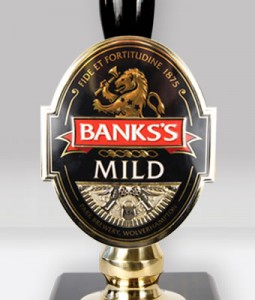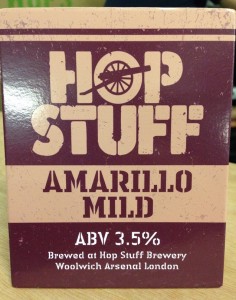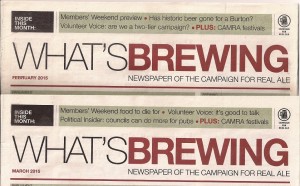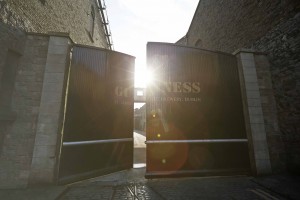Thanks to JW in the April edition of What’s Brewing, this has been a hobby horse of mine for some time.
Notwithstanding the important part mild has played in our beer history and the millions whose thirst it has slaked over the years I think it is time to move on. Mild seems to have been on the verge of extinction for several decades now with campaigns regularly held to save it.
 I well remember the decent beer desert that was the West Midlands in the 90’s. Banks’ Mild was extremely popular there but coming from the south I was severely disappointed. It was a style not often seen down south and I saw the reason why
I well remember the decent beer desert that was the West Midlands in the 90’s. Banks’ Mild was extremely popular there but coming from the south I was severely disappointed. It was a style not often seen down south and I saw the reason why
May is now fixed as ‘Mild Month’ by CAMRA, we are urged to get publicans to stock a mild and to try some milds. In my experience pubs stock beers they can sell and if they don’t regularly have a mild on then there is probably a good reason for it. Incidentally the list originally posted (currently down at time of writing) had only one mild in London listed, Clarkshaw’s in case you are interested.
It obliges me to point out, that among others in London, Hop Stuff Brewery has recently released an Amarillo Mild. Much though I love this brewery (being an investor also) and liked the sound of it the result is just a nicely made, unremarkable beer, not enough orangey Amarillo character for me. Perhaps I am missing the point of Mild? It’s happened before.
released an Amarillo Mild. Much though I love this brewery (being an investor also) and liked the sound of it the result is just a nicely made, unremarkable beer, not enough orangey Amarillo character for me. Perhaps I am missing the point of Mild? It’s happened before.
I like the idea of boosting the flavour with Amarillo of vanilla (East London Brewing in case you are wondering) but results consistently underwhelm.
As you can tell I am not a fan of mild, even more inventive modern ones. Tastes evolve, styles come in and out fashion, it’s normal. I believe beer drinkers have voted with their bellies. There will always be a place for mild but let’s stop flogging a dead horse and celebrate new beers instead.






![GUINNESS GOLDEN ALE BOTTLE [HI] half](http://intoxicated.me.uk/wp-content/uploads/2015/03/GUINNESS-GOLDEN-ALE-BOTTLE-HI-half-134x300.jpg)
